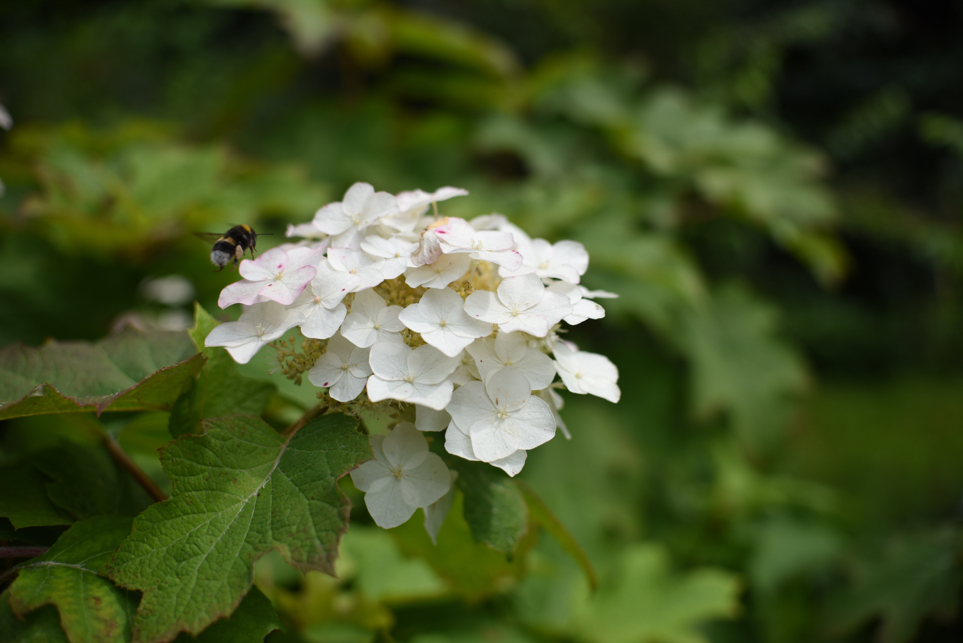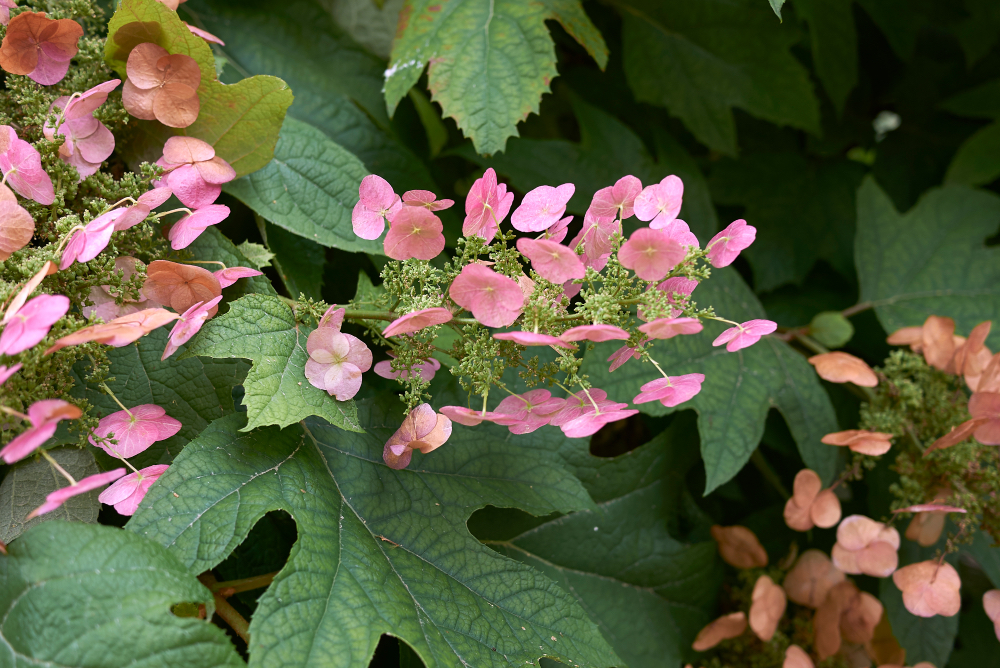5 Must-Grow Dwarf Hydrangea Cultivars For A Narrow Border Or Garden Bed

Chris is a gardening writer and nature enthusiast. He graduated from Oxford Brookes University in 2022 with an MA in Psychology. Chris works with the Leeds Green Action Society, helping their food cooperative by growing various fruit and vegetables on their two allotments in Hyde Park, Leeds.
Reviewed By COLIN SKELLY

Colin is a Horticulturist and Horticultural Consultant with experience in a range of practical and managerial roles across heritage, commercial and public horticulture. He holds the Royal Horticultural Society’s Master of Horticulture award and has a particular interest in horticultural ecology and naturalistic planting for habitat and climate resilience.
IN THIS GUIDE
Hydrangeas are a very popular flower with tons of cultivars, making them a versatile and attractive addition to pretty much any garden.
Some types also have the interesting tendency to change the colour of their petals depending on soil pH, which is a great “did you know” to impress people visiting your garden.
Thanks to their versatility, many gardeners like to select their preferred hydrangea varieties in terms of size.
Big, bodacious blooms are beautiful, for sure, but some of the hydrangeas’ finest moments come from its dwarf cultivars: those sporting more delicate and dainty blooms that are sure to delight.

Dwarf hydrangeas are versions of bigger cultivars purposely bred to be smaller, growing to a lower height at maturity with more petite blooms.
If you’re working with a small outdoor space, say a balcony, where there’s no soil, or you want the visual charm of a hydrangea contained in something more manageable, like a pot, dwarf cultivars make a lot more sense.
“Dwarf hydrangea cultivars make a great choice for a pot or for a narrow border or bed,” says Master Horticulturist Colin Skelly.
“However, their requirement for moisture remains, so ensure that the pot size and compost type are sufficient to hold enough moisture on hot days.”
These five beautiful dwarf hydrangea varieties will bring colour and visual interest to even the smallest garden:
1) H. quercifolia ‘Munchkin’

- NAME: Hydrangea ‘Munchkin’
- HARDINESS RATING: H5
- FLOWERS: White and pink
- FLOWERING SEASON(S): Summer / Autumn
- SOIL PREFERENCE: acidic / neutral pH
- EXPOSURE: Exposed / Sheltered
This bushy, rounded dwarf hydrangea cultivar sports a compact shrub with foliage that moves to a nice deep red in autumn.
The season of interest is later in the year than some plants, with the main floral bloom happening in late summer.
This cultivar will grow to a maximum height of about 1m, with a spread of around 1.5m if left to grow into a bush.
It’ll take between 5-10 years to reach this size.
‘Munchkin’ isn’t fussy, and will do well in clay, loam, or sandy soil as long as it is moist and well-draining.
2) H. macrophylla ‘Rio’

- NAME: Hydrangea ‘Rio’
- HARDINESS RATING: H5
- FLOWERS: Blue
- FLOWERING SEASON(S): Summer
- SOIL PREFERENCE: any pH
- EXPOSURE: Exposed / Sheltered
If you prefer a hydrangea with a rich blue bloom, the Rio could be for you.
Reaching a maximum height and spread of about 90cm, it’s very much a dwarf variety, but the large flowers give it a distinctive character.
This cultivar prefers well-drained soil and won’t thrive if left with wet feet.
It likes at least six hours of sunlight each day but also needs shade, especially in hot summer sun.
‘Rio’ does well as a container hydrangea, so it’s great if you’re working with a small space.
3) H. paniculata ‘Little Lime’

- NAME: Hydrangea ‘Little Lime’
- HARDINESS RATING: H5
- FLOWERS: Green, cream and pink
- FLOWERING SEASON(S): Summer / Autumn
- SOIL PREFERENCE: acidic / alkaline pH
- EXPOSURE: Exposed / Sheltered
It’s easy to see where ‘Little Lime’ gets its name.
Lime green flowers progress into creamy white and then light pink as the year passes by, bringing a pleasant and unusual colour palette to your garden.
‘Little Lime’ reaches a maximum height and spread of about 120cm: bigger than some other dwarf varieties, but still very much more diminutive than the biggest hydrangea bushes.
Plant somewhere with full sun or partial shade in moist, well-drained soil.
4) H. quercifolia ‘Pee Wee’

- NAME: Oak-Leaved Hydrangea ‘Pee Wee’
- HARDINESS RATING: H5
- FLOWERS: White and pink
- FLOWERING SEASON(S): Summer / Autumn
- SOIL PREFERENCE: any pH
- EXPOSURE: Sheltered
This cultivar is visually captivating, with green-lobed leaves that turn a rich red as autumn sets in surrounded by panicles with white florets that develop a pink hue on the same timescale.
With a maximum spread of about 1m in each direction over five-ten years of growth, the ‘Pee Wee’ is another mid-sized dwarf variety.
It will grow well in clay or loam soil, as long as it’s moist with good drainage.
The cultivar enjoys full sun or partial shade and will look great alongside an array of other flowers thanks to its colour palette.
5) H. macrophylla ‘Mini Penny’

- NAME: Hydrangea ‘Mini Penny’
- HARDINESS RATING: H4
- FLOWERS: Blue and pink
- FLOWERING SEASON(S): Summer
- SOIL PREFERENCE: any pH
- EXPOSURE: Exposed / Sheltered
There are a handful of colours available for this dwarf hydrangea cultivar, lending it a little more versatility.
Eventual colour will be influenced by soil pH regardless of how they’re sold, so be aware of this before getting too firmly set on a particular colour!
As a deciduous hydrangea variety, the mini penny will lose its leaves in autumn and winter, before gaining new growth in the spring.
It’s a repeat bloomer though, so you can rest assured that it will return year on year.

All of the flowers above are visually stunning, generally easy to take care of, and versatile enough to find a place in pretty much any garden or outdoor space.
Hopefully, the five cultivars here have either helped you to decide which one to incorporate into your garden, or inspired you to investigate other dwarf hydrangeas on offer.
